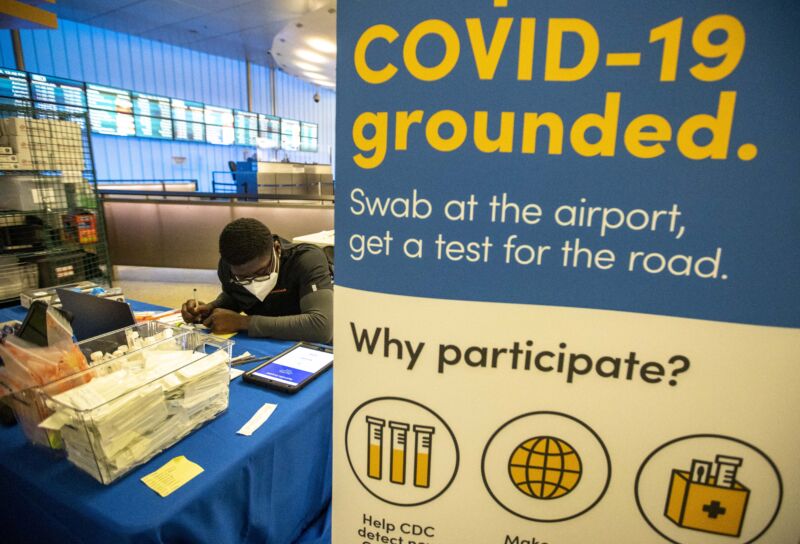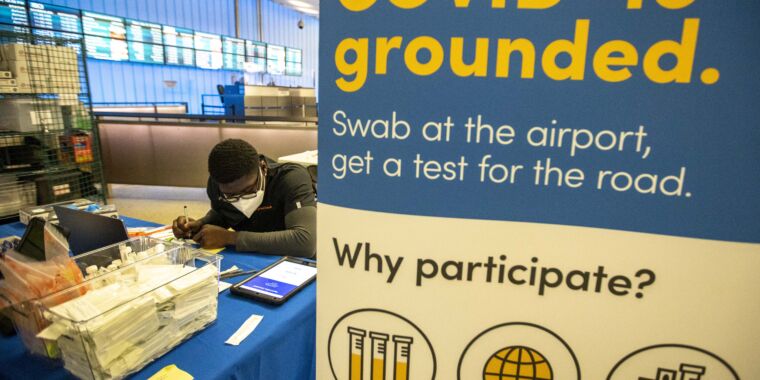
Amid a winter wave of COVID-19 in the US, the latest coronavirus omicron subvariant, XBB.1.5, has grabbed headlines due to its swift rise, raising fears of another towering spike in the disease. But the spotlight is revealing more questions than answers in the early days of the subvariant, which has ominously been described as one of the most immune-evasive omicron subvariants to date.
Last week, the US Centers for Disease Control and Prevention quietly downgraded estimates of its prevalence. As Ars and other outlets reported, the CDC previously estimated that XBB.1.5 accounted for 40.5 percent of COVID-19 cases throughout the country in the week ending on December 31, with the highest prevalence in the Northeast. But last Friday, the agency updated the estimates with a backlog of sequencing data from over the holidays, which indicated XBB.1.5 accounted for 18 percent of cases nationwide that week—not 40.5 percent. Currently, the CDC estimates that XBB.1.5 accounted for 27.6 percent of cases nationwide in the week ending on January 7. But the 95 percent prediction interval is wide, spanning 14 percent to 46.5 percent).
The updated estimate still indicates that the variant, first detected in New York in October, is on the rise. But the uncertainty throws a wrench in estimates of its transmission advantage over other omicron subvariant, BQ.1.1 is still the most prevalent omicron subvariant, accounting for an estimated 34 percent of cases in the US.
On Wednesday, the World Health Organization released a rapid risk assessment for XBB.1.5, concluding that it “may contribute to increases in case incidence” worldwide but that the agency’s overall confidence in that assessment is “low.” WHO noted that “as of the date of publication, available data are available only from one country [the US], and therefore confidence in a global assessment is low.”
Additionally, the agency found that there is no data on the question of disease severity from XBB.1.5 infections. However, the agency noted that “XBB.1.5 does not carry any mutation known to be associated with potential change in severity.”
It deemed its confidence level “moderate” in the assessment that XBB.1.5 is among the most immune-evasive omicron subvariants so far. Early laboratory work using pseudotyped viruses to asses neutralizing antibody responses suggests that XBB.1.5 is equally immune evasive as XBB.1, which is the omicron subvariant with the highest immune escape to date.
Uncertainty
Overall, it’s unclear how XBB.1.5 will play in the US or worldwide. As Ars reported last week, some areas of the US that are seeing post-holiday rises in hospitalizations are also seeing a high spread of XBB.1.5—but not all of them.
XBB.1.5 has popped up in numerous countries outside the US, with the UK having the next highest level of detections. It has also been detected at very low levels in Austria, Belgium, Czechia, Denmark, France, Germany, Iceland, Ireland, Italy, the Netherlands, Portugal, Romania, Slovenia, Spain, and Sweden, the European Centre for Disease Prevention and Control (ECDC) reported earlier this week.
The ECDC echoed the assessment from WHO, noting recent work suggesting that XBB.1.5 doesn’t appear to be more immune evasive than its upstream subvariant XBB.1, which is a hybrid of two BA.2 sublineages. But, XBB.1.5 may be better at binding the human receptor, ACE2, the gateway to viral entry into human cells. This “could indicate that the advantage of XBB.1.5 compared to XBB.1 could be caused by an increase in intrinsic transmissibility,” the ECDC speculated.
Still, like WHO, the ECDC ended with an equivocal assessment of the risk XBB.1.5 poses. “There is a risk that this variant may have an increasing effect on the number of cases of COVID-19 in the EU/EEA, but not within the coming month as the variant is currently only present at very low levels in the EU/EEA,” the agency wrote. “Due to uncertainties associated with the growth rate of the variant, this assessment is associated with a high degree of uncertainty.”
Back in the US, COVID-19 hospitalizations have risen 15 percent in the last two weeks, now averaging over 46,600 per day, and deaths have increased 50 percent, with a daily average of 580, according to data tracking by The New York Times.








